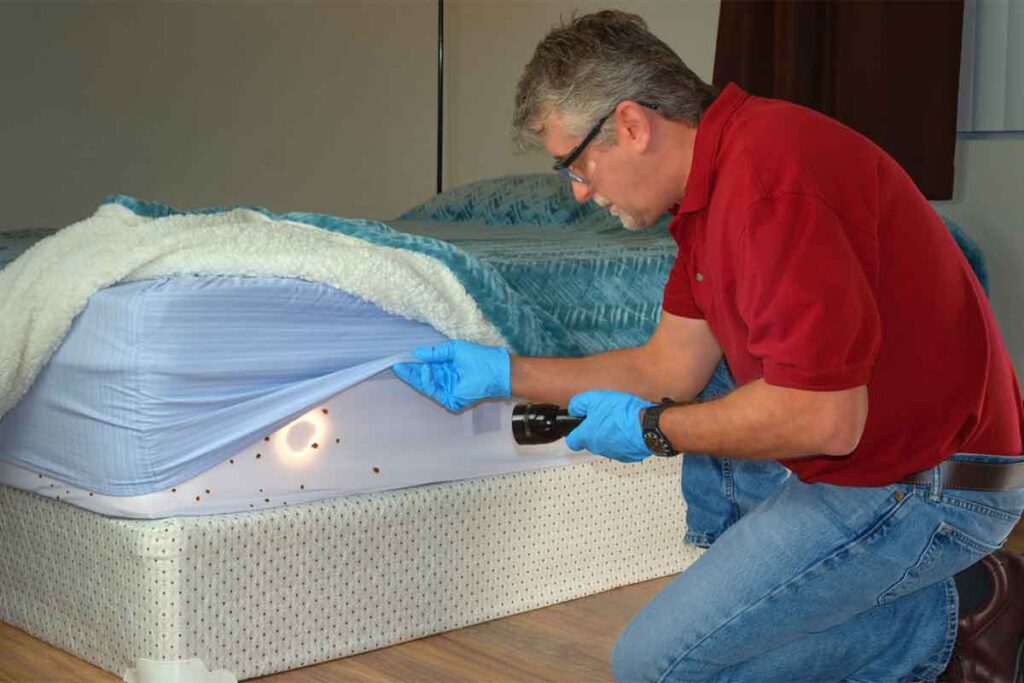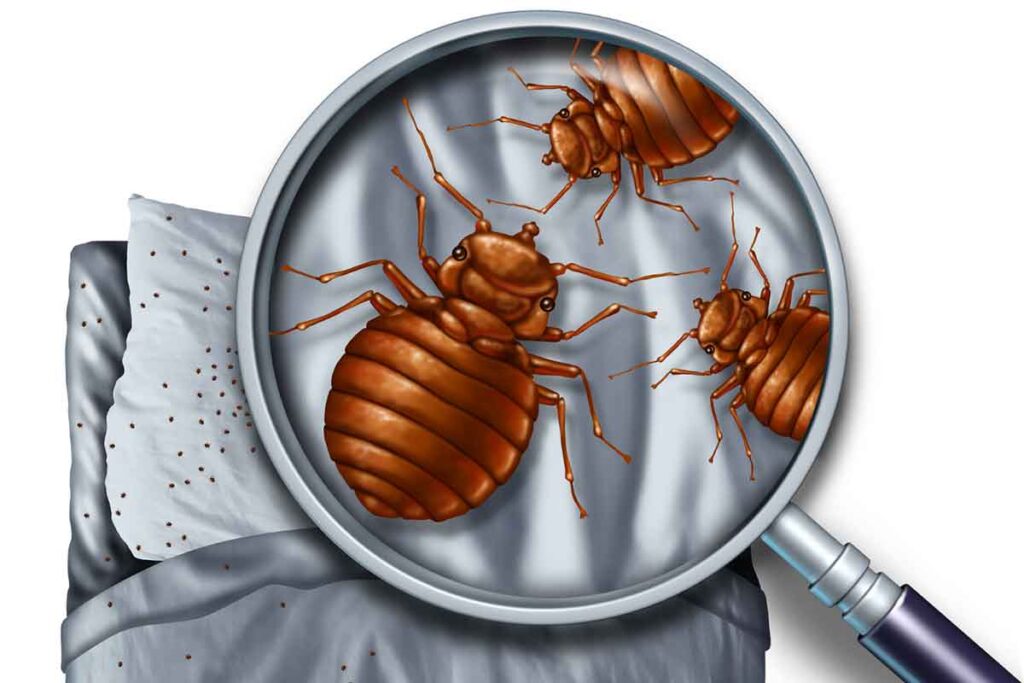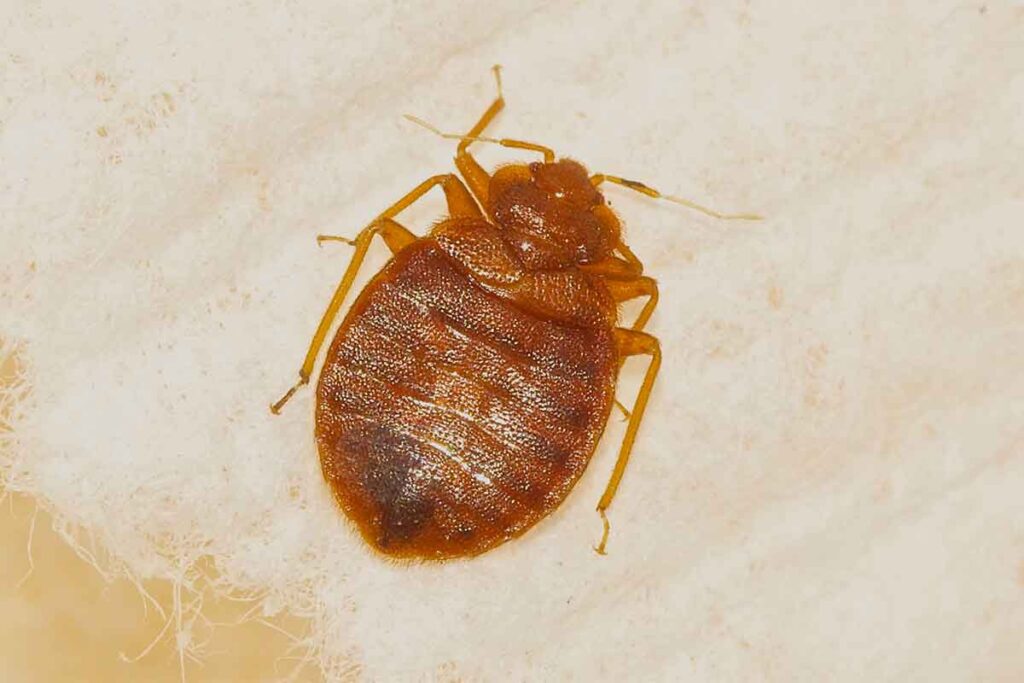Bat Bug vs Bed Bug Differences (Color, Size, Etc.)
Disclosure: We may get commissions for purchases made through links in this post.
You wake up during the night feeling a sting on your arm. Leaving the ‘scene of the crime’ is an oval, brownish insect, a reddish, itchy welt in its wake. Flicking the sleep-jolting intruder away, your initial thought is – a bed bug! But what if it’s a bat bug? Is there a difference? Since bat bugs and bed bugs belong to the same scientific family Cimicidae, the naked eye won’t easily recognize the differences. However, there are more than a few. Knowing those differences is the purpose of this article.
From color and size to regions where they’re commonly found, there are ways to identify the differences between bat bugs and bed bugs. Other differences include habitat, appearance, and pest control methods.
Here’s a quick list of the differences between bat bugs and bed bugs:
- Color
- Size
- Region
- Habitat
- Appearance
- Bite
- Diet
- Pest Control Method
If you and your loved ones have been involuntary snacks for either bat bugs or bed bugs, knowing their differences would help you call the ‘right’ exterminator. Should you plan to do the pest control (view on Amazon) yourself, reading through this article would give you a head start in dealing with either of these pesky sleep invaders.

Bat Bug vs Bed Bug: The Difference
Some studies show that since both bat bugs and bed bugs exclusively feed on mammal blood, it’s possible that bed bugs evolved from bat bugs when people once shared caves with bats. Without discounting the potentially linked origins of both bugs, let’s dig deep into the bat bug vs bed bug bloodsucking war and know their differences.
1. Color
Differentiating a bat bug vs a bed bug in terms of color is a bit tricky since they aren’t too far away in the color wheel. Both have small oval and flattened (making it easy for them to hide in cracks and crevices) body shapes, but a bat bug is beige or transparent tan in color. After a full meal, however, its color turns dark brown. Bed bugs, however, appear mahogany or reddish-brown.
2. Size
In the bat bug vs bed bug size competition, the former wins. Usually, with a body length of approximately one-fourth of an inch, bat bugs (scientifically called bat mites) are a tad longer than bed bugs, which are about 0.13 inches long. But since both are barely the size of a pin, only the help of a magnifier (view on Amazon) could let you see the difference.
3. Region
These tiny vampires proliferate in different regions as well. Bat bugs are common in Midwest US, while bed bugs could be reigning havoc all over the world!
4. Habitat
Staying close to their bat hosts is the bat bug’s priority, wandering only to other hosts when the bat colony they feed off from flies to another ‘hangout.’ Apart from caves, bat bugs could be hiding in the following areas of your home:
- Ceilings
- Wall voids
- Barns
- Basements
- Cellars
- Unused chimneys
- Attics
If you have any uninhabited or seldom-used parts of your home where bats may already have established a home for themselves, those are potential breeding grounds for bat bugs. Cracks and crevices in these potential bat-roosting areas are the bat bug’s ‘haven.’
Bed bugs also stay close to their hosts, which is you. Expect these bloodsuckers to lurk within a few feet from places or spaces that you frequently use. Among them are mattress seams, bed frames, headboards, couches, baseboards, and upholstered furniture. Like predators carefully studying their prey, they hide during the day then get their dose of human blood while the host is sleeping.
5. Appearance

Bat bugs have longer hair on the top of their upper thorax (comparatively the neck area) than bed bugs. Unless you’re a trained professional, however, you may need a microscope or a magnifier to recognize the difference.
6. Bite
Bat bugs vs bed bugs bites don’t differ much, with their straw-like mouthparts looking like beaks for sucking and piercing. However, it’s been said that bat bugs feeding off humans is like living on tofu – it’s not quite filling. Following that premise, the tiny welts on your skin that they leave behind could be more compared to bed bug bites.
In terms of pain, bat bugs are reported to bite more painfully than bed bugs. On some occasions, people even develop allergic reactions to the bat bug’s saliva compared to the human bloodsuckers, which are the bed bugs.
While this doesn’t make the bat bug or the bed bug’s bite any less irritating and uncomfortable, both bugs’ bites don’t infect humans with diseases. Particularly with bat bugs, while their hosts may carry and transmit harmful diseases to people, bat bugs are not carriers.
7. Diet
Bed bugs feast on unsuspecting human hosts. They could, however, stick their proboscis (retractable tube in their mouths) in family pets’ skins for a little bloody sip.
Bat bugs prefer to snack on bats, both the little and big brown ones. However, don’t be too complacent, thinking that bat bugs would raise their brows at human blood. If their original choice becomes scarce, you’re next in line.
While there’s no scientific proof yet, it’s believed that bat bugs cannot reproduce without a bat host.
Point to ponder: If you successfully identify that bat bugs are invading you, don’t rest your laurels yet. Because it means a bigger pest problem – you probably are living with bats. If this is the case, your home becomes an open house for more parasites like mites and fleas.
8. Pest Control Method
Eliminating the threat of a bed bug vs a bat bug also differs in terms of extensiveness in the process. For bat bugs, once you identify the hiding place of the bats and clear the space up, disinfect the area, and you’re done. No bats, no bat bugs.
Don’t let your guards down quickly, though. Until these bat bugs find another bat colony, they’d be wandering around and prey on their immediate source – human blood.
Dealing with bed bugs, however, is trickier. Cleaning and disinfecting aren’t enough. More importantly, you have to alter their reproductive cycles. It’s a process that you should call a professional to help you with, like companies offering pest management services.
An example of these services is the Cryonite Method wherein the cooling property of carbon dioxide is leveraged to disrupt the lifecycle of bed bugs. Other methods are the introduction of extreme heat and fumigation to reach tiny cracks where bed bugs generally hide.
Prevention: Bat Bug vs Bed Bug Infestation

Knowing the difference, whether you have a bat bug or a bed bug infestation could be complemented by preventive measures, so they don’t flock to your home again. Here are some tips:
- Clean regularly, both the areas that you frequently use and those not often used.
- Avoid visiting infested places or using infected materials until after those have been cleared of infestation. Just one bat bug or bed bug clinging to your clothes will have a free ride to infest other areas.
- Seal cracks (view on Amazon), holes, and crevices are potential hiding places for bat bugs or bed bugs.
- Repair broken door and window screens. Replace if necessary.
- At the initial sight of eggs, nymphs, or adult bat bugs or bed bugs on your clothes, upholstery, or beddings, immediately wash the infected materials in hot water and dry using the highest temperature setting.
- Do immediate remedies like spraying visible infestations with alcohol. Using diatomaceous earth, a natural substance that dries up bugs’ exoskeletons and consequently removing them, is another option.
- Cut-off their food source. Try elevating your bed with bug traps (view on Amazon). Since both bat bugs and bed bugs crawl up to you from their hiding place, a talcum-lined pitfall would halt their journey. Both bat bugs and bed bugs could survive in hiding without a food source for a year.
- Seek the help of professional exterminators if necessary. This is most helpful if you’ve identified that bats are seeking shelter in your home. Bat feces contain Histoplasma Capsulatum, a type of fungus that could lead to lung disease.
Conclusion – Bat Bug vs Bed Bug: The Difference
Both bat bugs and bed bugs are highly irritating and undeniably gross. But let’s recap the bat bugs vs bed bugs differentiation challenge:
- Color
- Size
- Region
- Habitat
- Appearance
- Bite
- Diet
- Pest Control Method
The differences might be minuscule at best but knowing them gives you a head start in the bed bug vs bat bug battle for your enticing blood. You’d also know whether you could resolve the infestation yourself or seek professional help. More importantly, you’re now equipped with preventive steps so you don’t wake up scratching your way out of an otherwise dreamy slumber.






